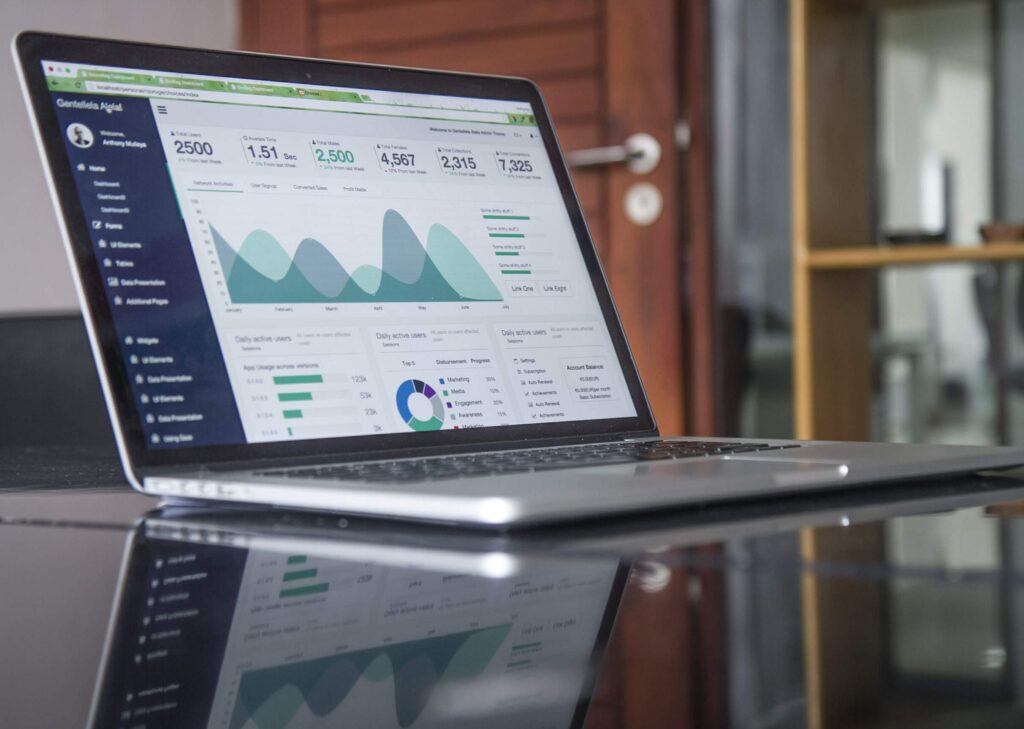One of the first decisions that the owner of a small ecommerce business must make is what platform to use. There are a lot to choose from: Shopify, eBay, Amazon, and more. Each of these platforms has its own set of pros and cons, and one shop may be well suited for Shopify while another makes sense to run on Amazon. Figuring this out is a big decision that can really impact a store’s ability to grow.
But one thing that many ecommerce sellers don’t realize is that running a store on just one platform sometimes isn’t the best choice. Experts suggest that using multiple platforms can help expand the reach of a store without putting in a ton of extra effort. Think about it this way: if you’re only selling on Shopify, you’re not getting any business from customers that only use Amazon. Bringing your shop to new platforms can greatly increase how many potential buyers you have.
Opening up new sales channels can be a lot of work, but it really pays off. In this article, we’ll dive into the details of bringing your business to new platforms. We’ll also go over a few tips that will help you expand onto new sales channels.
The benefits of using multiple platforms
We understand if you’re feeling a bit hesitant to jump into a new selling platform. Most people just want to stick with what they’re used to. That makes a lot of sense. If you’ve been using Shopify for months – or years – it might seem intimidating to jump into a platform that has a completely different user interface, themes, and way of making revenue.
But there are enough benefits to moving your business onto new platforms that you should still be open to the idea. Although it may take some getting used to, you’ll find that the work you need to put into adapting is worth it. Plus, when you really get down to it, major selling platforms like Shopify and Amazon aren’t really all that different.
One of the biggest benefits of expanding into new platforms is the fact that it provides you with a safety net. If you’re only using one sales channel, you are effectively putting all of your eggs into one basket. Having multiple platforms means that you will still be able to do business if one of your sales channels falls apart.
While the odds of Shopify or Amazon randomly going down one day are low, it’s not an entirely unrealistic idea. Factors outside of your control like server issues, hackers, and supply chain problems can potentially compromise one of your sales channels. If you have multiple, you can still keep business going while another is down. If Shopify is doing server maintenance all day, you can still be selling products on Amazon so that your stream of revenue is uninterrupted.
Another major benefit is the fact that you will have a larger and more diverse audience to sell your products to. This can actually have a big difference for your business. Aside from the obvious fact that you will be selling to more people, you may find that certain products perform better on some platforms compared to others. Certain sales channels can have very different demographics, so expanding onto a new one can bring in a totally different kind of clientele. A product that was previously clogging your inventory might become one of your best-selling items on a new platform.
This same fact also allows you to be a more competitive business. If you’re only on Shopify, you might be thinking solely about the other Shopify sellers within your niche. But those aren’t the only stores that are competing against you. All stores across the Internet that sell similar products to you are taking business from you, and getting onto new sales channels will allow you to compete directly against them rather than indirectly. This increased level of competition can make your shop more innovative and efficient.
Finally, moving onto new sales channels will let you take advantage of the uniquities of different selling platforms. Every platform has certain restrictions, rules, and regulations that might impede your ability to sell. Moving to a new one will allow you to bypass these rules and sell in new ways.
As an example, think about Etsy. They have pretty stringent copyright rules that might make you wary to sell items that are even somewhat similar to copyrighted material. On eBay, though, there aren’t any problems like this. That means that you may be able to sell items on eBay that you can’t sell at all on Etsy. While the benefits aren’t usually this clear cut, the same general principle applies to all selling platforms.
The downsides of using multiple platforms
Although we are big advocates of sellers diversifying their sales channels, we will also admit that there are some downsides and challenges to doing so. The fact that getting onto extra platforms requires a lot of work and thought makes it a less appealing option for new sellers who are still trying to figure out their first platform. If you’re not yet ready to jump into new sales channels, don’t force yourself to do so.
The main challenge that moving onto new platforms presents is the sheer time sink. You’ll need to spend a lot of hours familiarizing yourself with the strategies that lead to success on the platforms you decide to try out. Even small things like picking out a theme for your shop might take a lot of time as you adjust.
You may also find that your product descriptions are expected to be longer or shorter than you are used to, so you may spend some time editing copy. Images may also need to be different sizes, so you’ll need to resize your product photos or take new photos entirely. All of these small tasks add up. It’s not as simple as just creating a new account. You’ll need to do some serious work to fully and eloquently transfer your business over.
Another potential issue is that your supply chain will become more complicated as your sales channels become more diverse. If you are working with an automated system, you will need to figure out how to integrate your new sales into your existing supply chain without it messing things up. Don’t collapse all of your sales into one category too quickly, though. You’ll want to be careful that the sales across all of your channels remain distinct enough that you can track your performance on each.
Finally, you’ll quickly see that facing the entirety of your competition head-on can be exhausting. Although it is good for your business in the long run, keeping up with many different competing shops across many platforms is a lot of work to do. It requires you to constantly monitor trends and to contextualize those trends across different platforms.
Are any of these challenges insurmountable? Far from it. But you should be aware of them before you jump into creating accounts on new sales channels.
Use multi-channel listing software
There’s no way around the fact that creating more shops and transferring information to new channels is a lot of work. But one tip to making it easier on yourself is to avoid doing everything manually. There are many pieces of software out there that automate the listing process so that your items can instantly be on all of your shops at once.
Doing this will create a consistent feeling across all of your shops, and that should certainly be the goal. If each store feels disconnected from the other, it’s possible that your customers get confused. You should aim for each sales channel to feel similar enough that it’s clear that they all belong under the same umbrella.
Multi-channel listing software is the best way to do this. The way these programs work is by taking your existing SKUs and product data and using this same information to upload products to all of your different channels. This should keep all of your metadata consistent where possible, including tags and filters. You also won’t need to worry about updating the prices of your items on all of your platforms. If you update it on one, it will be updated everywhere.
A good multi-channel listing software will also keep your inventory management integrated across all of the platforms that you’re using. If you have 50 of a certain item and 10 of them sell on Shopify, it should then say that you have 40 of that item on your Amazon shop even if none have sold on Amazon. This all happens automatically which frees up a lot of your time.
This level of inventory integration also helps you avoid stocking out of items or encountering the need to back order. Because each group of customers is ordering from the same inventory, they will all have the same understanding of how much stock is left. You’ll never encounter a situation where you sell out on Platform A only to receive 50 more orders from Platform B, forcing you to reorder early.
As for which multi-channel listing software you should go with, it ultimately depends on the size of your business in addition to your goals. You can always take advantage of the fact that most companies offer free trials for their software. These demos are a nice way to determine which software suits your needs.
Consider profitability when choosing new sales channels
Choosing which new platform to add to your roster can be difficult. You already had to really search to decide which platform to go with as your main sales channel, and now you have to repeat the same process. We suggest that the best way to choose your new sales channels is to make profitability your main focus.
There are lots of ways that you can think about this. The first is to look at the fees that each platform requires of its sellers. For instance, some take a cut out of each sale you make while others charge a flat fee per month along with a few other small costs. Amazon, for example, goes with a monthly cost that is pretty low, but their other fees can add up over time.
Another way to consider profitability of a certain channel is to look at similar businesses to see how they are doing. If you sell candles, take a look at other candle shops on a channel you are thinking of expanding into. Are there many shops that all seem to be doing well, or does no one seem to buy candles on eBay? The performance of your niche on a platform can really determine what kind of revenue you can make. In other words, don’t expect to outperform similar businesses unless you have a really good reason why you will.
Similarly, the level of competition that you will be facing on a platform will impact how much profit you stand to make. If there is one competitor that already has a stranglehold on 90% of the business in your niche, it may be difficult for you to get a foot in the door. You might end up paying fees to host your shop just to have your entire audience continue shopping at the store that is already established.
Finally, consider the logistics that might change how much money you can make. Is it more difficult to fulfill orders via Platform A rather than Platform B? Will there be higher shipping costs per item on Amazon rather than Etsy? Do customers on Platform C make many small orders rather than fewer large orders? These are all questions to try to answer before making the official move onto a new platform.
Remember: all sales channels are different. Don’t expect to succeed just because you choose to diversify what platforms you’re on. Try to pick the one that you will profit the most from and move on from there if necessary.
Expand to one channel at a time
As we’ve said, it takes time to adjust to a new sales channel. That’s why it is incredibly important to go slowly when you’re in the process of expansion. Instead of moving your shop onto several new platforms at once, just do one at a time. Once you’ve become comfortable with that channel, start looking into the next.
One of the reasons why this is so important is that it’s easy to get confused and overwhelmed by all of the different rules and idiosyncrasies between platforms. If you give yourself too much to learn at one time, you might end up listing things wrong on a platform. This can lessen your profits and make your brand seem less credible.
In addition to that, you might find that you’re not equipped to handle the growth that can be brought by multiple new sales channels. The ideal situation is that each new channel that you open up brings you lots of new customers and orders in addition to your regular, main channel business. Is your supply chain ready to handle these new orders? Can you ship things out in time? Will you need to make last minute orders from your supplier just to make sure that you have enough inventory to fulfill these purchases?
In most situations, the answer to those questions will be “no” if you rush into things. Growth is great, but it takes time to adjust your business accordingly. It’s hard to accurately project exactly how many new orders you will have, so going with one channel at a time will help you make real-time adjustments as you get more customers and start making more sales.
Finally, moving slowly through this process will give you time to analyze each channel separately and determine whether it is helping your business or not. If you make a new store on both Amazon and Etsy at the same time and then your profits start dipping down, it will be hard to figure out which channel is causing you issues. If you only have one variable to worry about, it’s much easier to pinpoint the problem and see if it’s worth continuing to do business on that platform.
It can be tempting to just go all-out in the hopes that your business will start dramatically improving, but you should aim to add new sales channels slowly and methodically. Patience is a virtue!
Play the balancing game
One more important tip to keep in mind is that adding new sales channels is always going to be a balancing game. What we mean by this is that moving onto new platforms will inevitably cause you to spread some of your resources thin. Your goal should be to maximize profitability on these new channels without sacrificing quality on your main channel.
Here’s an example to illustrate our point. Let’s say that you’re an independent business owner that runs an ecommerce shop. It’s a pretty new store, and you don’t have many employees at the moment. All of the day-to-day decisions involving the business are up to you, and you have 5 hours each day to dedicate solely to the business. Those 5 hours a day are spent mainly on the Shopify site that the business runs on.
Now imagine that you open up an Amazon. Running that store takes up 2 hours per day, leaving only 3 hours to be dedicated to the Shopify site. In this situation, the Shopify site will likely suffer because there is far less time being dedicated to it now. The question is: do the profits from the Amazon store justify the lowered focus on the Shopify store?
This is the kind of balancing that needs to be done when new sales channels are opened up. Customer service will likely dip a bit as you open up new channels, but the goal is to make sure that this dip doesn’t affect your business in any serious way.
At the end of the day, the quality of your business is all that you have. If you find that running multiple sales channels well isn’t possible, it may be wise to just stick to one or two. Don’t sacrifice quality for quantity, but also be ready to play the balance game as intelligently as possible.
Get ready to update your advertising
Opening up new sales channels will require you to rethink everything about your business. In many ways, that can be a good thing. It’s always a benefit to your store to take a critical look at how you are operating all aspects of your business. One major aspect of your ecommerce business that you will need to reevaluate as you move onto new platforms is advertising.
The main reason for this is quite obvious. If you have new sites, you will need your ads to send customers to those web addresses. That means creating a whole new campaign (or multiple new campaigns) that link to your other sales channels. In fact, your ad spend might be more wisely spent on your newer sites since they are more likely to be unknown when you first create them.
Additionally, your ads may need to have different approaches depending on the platform. While Shopify, Amazon, and all the other ecommerce services are similar, their demographics are different and unique. That means that you have unique audiences that respond to completely separate ad techniques depending on the platform.
The best way to figure out how to tweak your ads for each platform is through good old fashioned trial and error. Run some new ads, see how they perform, and then make some changes. For example, a light-hearted approach may work well on Shopify, but Amazon shoppers may want your business to appear more serious and professional. But you’ll never know this until you start running campaigns and see how they do.
Keep an open mind
Trying out new sales channels can be a super exciting phase in building your business. It opens you up to completely new audiences, and it’s likely to kickstart a lot of growth for your ecommerce shop. But you need to go into the process with an open mind. Finding success with new sales channels requires you to be willing to shift your business plan.
No matter how prepared you are to transition to a new platform, there are going to be things that catch you off guard. Maybe shoppers on a certain platform tend to only shop on a seasonal basis. Maybe they order at odd times. Maybe they prefer certain products that you wouldn’t have guessed that they would have liked. In any of these scenarios, you need to be willing to accept what the data says and adjust your plan accordingly.
This same kind of open-mindedness should be applied to every new channel that you open up. You might have a ton of optimism about a platform and then find that it doesn’t work at all for your business. Even though your predictions said it would benefit your company to sell on that platform, you may find that in practice it actually decreases your profits.
In a scenario like that, you should be ready to drop that channel. But not only that, you should have developed a plan B beforehand so that you aren’t scrambling to figure out what to do with all of your extra time and resources.
Part of being open-minded in the ecommerce world is about being willing to pivot, but another aspect is planning ahead so that that pivot doesn’t damage your business. If you think through things ahead of time, you should have few troubles no matter what happens as you start using multiple sales channels.
Explore less popular selling channels
Every business owner knows about the biggest and most popular selling platforms on the Internet. Shopify, Amazon, Etsy, eBay, and Walmart are all household names that will immediately come to mind when you start considering new sales channels. But there are actually plenty of other options out there for you to sell your items. To avoid doing your business a disservice, you should look into the less well-known sales channels that are out there.
The list is long, and it’s possible you’ve never even heard of some of them. And that’s okay. Rakuten, for instance, isn’t known by many Americans, but it’s very popular in Japan. TopHatter has a unique, auction-based way of selling items. WooCommerce allows you to sell items through a WordPress website, making it an ideal channel to try out if you already have a blog or a WordPress following.
There are tons of options beyond these, but they should give you an idea of just how many sales channels are out there. Many of them have completely separate audiences that could potentially bring in a huge amount of new business to your shop. Working with a channel that is popular in Asia, for example, could give you access to customers that would have otherwise never seen your shop.
Of course, this same example highlights one of the challenges in working with these more obscure channels. They potentially come with logistic issues that you need to figure out. If you’re an American selling on Rakuten, you need to be ready for international shipping. That means longer wait times and higher shipping costs. If you just make a Rakuten shop without looking into this, you might get caught shouldering higher costs than you were ready for.
Depending on what kind of shop you run, these channels can work quite well for you. They also might not be a great fit, leaving you with the classic options like Shopify and Amazon. If that’s the case, that’s totally okay. But you’ll never know if they will work for you until you do the research.













